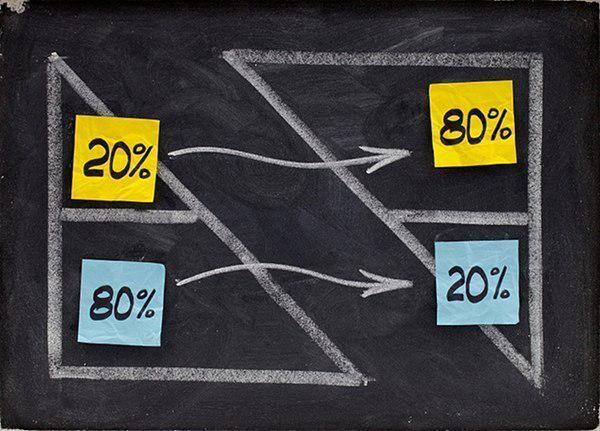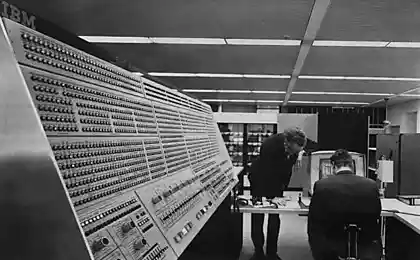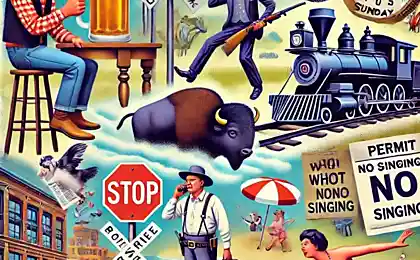1620
Pareto IN MARKETING

All you've probably heard about the "80/20 principle (Pareto's law)", the essence of which is as follows: 20% of your efforts are paying 80% of the results. But have you ever thought about it seriously?
Best-selling author and the highest paid consultant Google AdWords Perry Marshall (Perry Marshall) over the past 10 years has achieved outstanding results using the Pareto principle. He shared his ideas in the book «80/20 Sales and Marketing: The Definitive Guide to Working Less and Making More»
Perry is so convinced of the power of the Pareto principle, sometimes joking: "If my business consultation suddenly interrupted by a terrorist who would burst and dragged me into a black sedan, the last thing I would have cried to the client:" Use the 80/20 principle. "< br />
Below, we present fragments of the interview in which Perry tells how the 80/20 principle can change your business and even your entire life.
Almost everyone has a general idea of the Pareto principle, but few people use this principle in business and marketing with such success, what have you. What all of these people are missing?
People mostly overlooked aspect 3:
They think that this principle applies to only a few areas, such as customers or sales. In fact, 80/20 works almost everywhere where you can keep score. For example, manufacturing defects, complaints and theft performance during the working day, and so on.. In all these things we can determine the proportion of 80/20.
Few are aware that 80/20 - endlessly repeating patterns: if you ignore the bottom 80%, the 80/20 applies to the remaining 20%. This means that 64% of the results, is worth 4% of your efforts. The same can be done with 4%: in this case, 1% of the effort will bring 30% of the results.
Almost no one understands that when a group of people responding to a stimulus: for example, 100 people bought from you the same products - 80/20 can tell how many of them are willing to buy a product that costs 10 times as much.
All this means that you can apply the 80/20 principle as the 80/20 rule: that is to make a small test marketing, and then extrapolate the results on a large scale.
Though 80/20 and will not show you that people will buy and what not, but can show how much they would be willing to pay for the right product. How accurate?
In parallel with the release of the book has opened an online service Perry (www.8020curve.com), in which you can work with any numbers to demonstrate the accuracy of the principle of 80/20.
So, Southwest Airlines is at 167 on the Fortune 500 c-income 175 000 000 000 $. Let's calculate how much more those of other companies in the list of Fortune. Here's what happened:
Strange for the Russian everyman examples fully confirm the correctness of our (and our statements).
Here's another example: 100 people paid $ 3,000 for an ocean cruise. And now this has happened: 80/20 says that 7 of them are willing to pay $ 30,000 for a longer journey. What can you offer these seven, so they paid you 10 times more?
Consequently, the 80/20 can be applied to a million different situations. To get you started, for example, in marketing?
Marketing on 80/20 must begin with the following bases:
20% of people spend X dollars. 20% of them are willing to spend 4 times more. Another 20% of them are willing to spend 4 times more. And so on until there are no more people.
For example, if 1,000 people pay you $ 100, you will have $ 100,000. Pareto principle should immediately signal that 200 people from this thousands willing to pay 400 $ 40 $ 1,600 and $ 8 for 6400, and the last remaining shake out of the capsule as much as 25 600 $.
Total: 320 000 $. Now you know how much money you lose when offering customers the goods only $ 100? The Pareto principle is able to triple your income!
Diversify your business! Economic bends can knock out of the saddle one line of your products, but the rest remain in the game.
That's why General Motors have in stock Chevy and Buick, Cadillac and GMC. Expensive brands bring them the real income, and with the help of cheap they retain market share.
Be sure that your clients are those who are experiencing the so-called consumer itch - they are so tempted to spend your money. Help them do it!
It is obvious that the product of $ 6400 will be very different from the product for $ 100. Sometimes you will come across customers who want to buy 100 units sold for $ 100, but believe me, it is much more likely to meet buyers with a desire to buy the product for 6400 $.
Many people refer to as the high-end brand to the anomaly: "Who will pay $ 2600 for that ugly dress?". The answer is simple: 0, 3% of the population, that's who!
Now you understand that in any business, there are incredible hidden features. But most predprenimateley simply does not notice because of the limited possibilities of thinking and ignorance of the Pareto principle.
The company had one client who brought 75-80% of all profits. And then one day, the client decided to change supplier. The company then bent just a month. In this regard, curious to know: whether there are situations when relying on 80/20 downright dangerous?
The Pareto Principle says that if you have 5 clients, one of them brings 40% of the total income. And if you have 500 clients, most of them brings only 10% of revenue. 80/20 can not be extrapolated solely on one client.
This is sure to be a group of people.
80/20 helps to understand what impact your business one customer, the loss of which can be either a grain of sand in the sea, or the apocalypse. Over 40% overnight - this apocalypse.
Sometimes it happens that 80/20 is bad for business, but only if the entrepreneur ignores the bottom 80%. The fact is that from them can not escape, they also require a certain amount of energy.
The second extreme - too petty attitude towards the Pareto principle. 80/20 According to invest in Gifted Program and stop funding Special Needs program. Remember, eugenics also tried to "clean up" society from unwanted persons with "bottom rung", but their idea turned out to be absurd.
Disease of the century - the love of tinsel, glitter which overshadows the really important areas of business (and life). Can the 80/20 principle to help separate the wheat from the chaff?
With the advent of new gadgets we stopped to appreciate your time. Almost 80% of our productive time is spent on useless entertainment and empty chatter with "electronic friends." We seem to be constantly busy, but did not achieve, the economic crisis of 2008 is closely linked with the flourishing of Facebook.
Through the prism of the Pareto principle can suggest the following:
Do not let email-messages, tweets and social networks distract you from your work.
Stop constantly checking e-mail.
You should never engage in meaningless activities, even in order to give us something to keep him occupied.
Instead, ponder, plan, do not be afraid to remain in silence and remain in silence - it leads thoughts. Read and spend more time outdoors.
It is important to start a new day with planning. Make plans for the day 80/20 - 4 highlight the most important points and 16 secondary.
When you put yourself on a rigid barrier outside interference, when you finally come off of Facebook and e-mail address, you'll be amazed how clearer head. Will be "an extraordinary ease of mind", as used to say Gogol Khlestakov. That's how our brains - for new ideas need space.
You might think that life is too short and time to spare. But it is not so. Follow the Pareto principle and you will see that you have plenty of time to implement the most ambitious plans.























